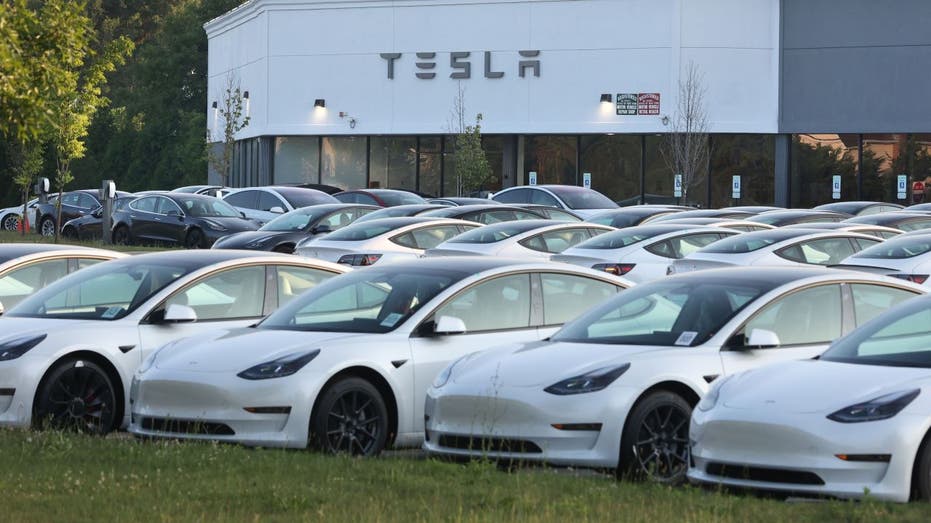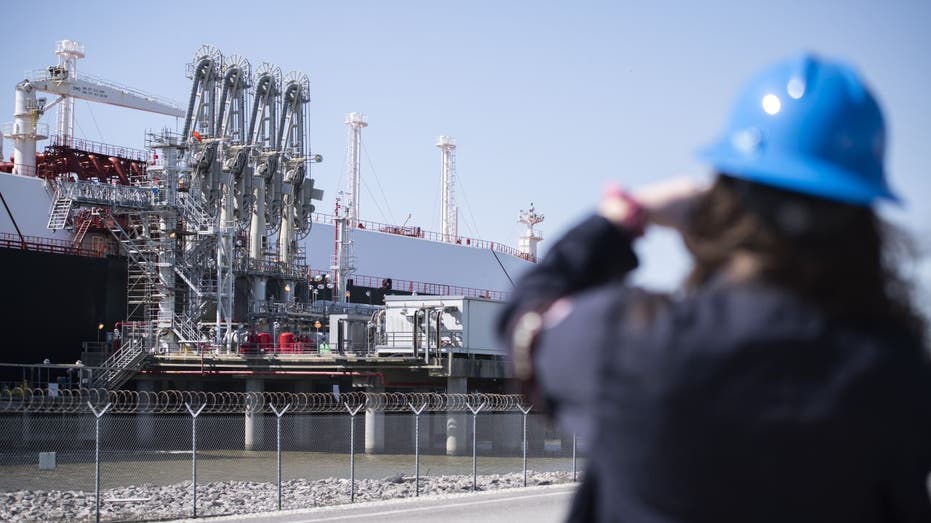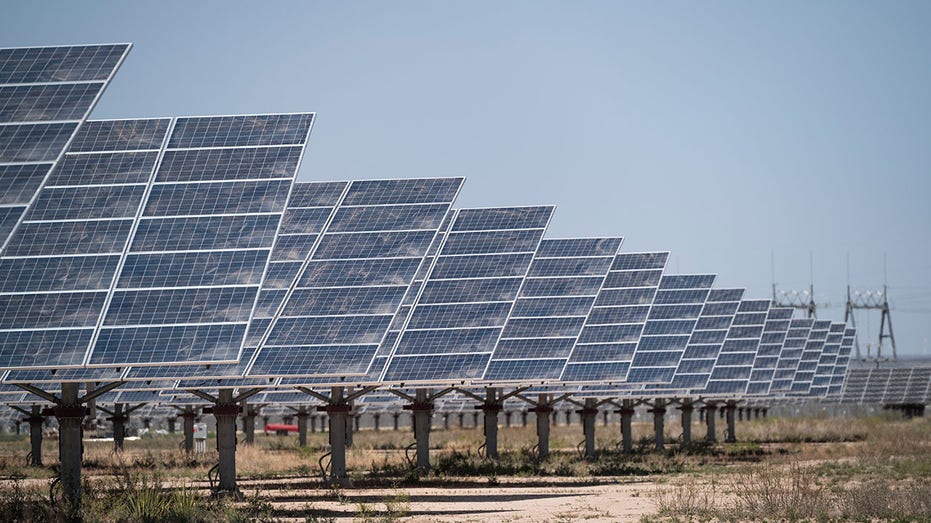Oil and gas demand could continue to grow until the middle of the century, according to a new International Energy Agency scenario that shifts away from previous expectations of so-called peak oil demand because of slower adoption of green technologies.
The Paris-based agency, which represents oil-consuming nations, said that under this scenario, demand for oil and natural gas would continue to grow to 2050, while coal goes into a decline before the end of this decade.
The IEA had previously scrapped this model and focused on one where renewables and the speedy adoption of electric cars would lead the world to wean itself from oil and gas in the years ahead. But a change in policies in the U.S. toward heavier reliance on fossil fuels and the potential for a slower-than-expected take up for EVs could now alter the calculus.
US HAS ONLY ‘SCRATCHED THE SURFACE’ OF ITS OIL POTENTIAL AS EMERGING TECHNOLOGY STRENGTHENS ENERGY OUTLOOK
The agency includes multiple scenarios in its annual report, which often serve as an influential baseline for governments and companies when mapping out energy policy and investment.
The report was published as nations meet in Brazil as part of the U.N.’s annual climate change talks.
Under the “Current Policies Scenario,” which is based on existing policy and regulations, global demand rises to 105 million barrels a day in 2035 and 113 million barrels a day in 2050, from 100 million barrels a day last year, mainly driven by petrochemical feedstocks and aviation.
Meanwhile, the share of EVs in total car sales is expected to plateau after 2035 due to insufficient policy support in some regions, with the exception of China and Europe. This slowdown is set to further drive oil demand growth into the 2030s and beyond.

Peak oil consumption—the point at which global oil demand reaches its highest level before starting a sustained decline—has been at the center of the energy debate in recent years. The IEA has repeatedly estimated oil demand will peak before 2030, while others in the industry see it happening later in the decade or even beyond.
The decision to reintroduce the CPS scenario was dictated “by the changing economic and energy context,” said IEA Executive Director Fatih Birol.
“There are many uncertainties today—economically, politically and technologically,” he said in an interview. “We want to have a broader range of scenarios to try to address all of these uncertainties, and I hope it will meet the demand of our leaders, our governments, industry and other stakeholders.”
BURGUM, ZELDIN, WRIGHT: THIS IS HOW AMERICA WILL ACHIEVE ENERGY DOMINANCE
While oil markets are well-supplied in the near term due to steady output from key producers in the Americas and subdued demand growth, the CPS scenario shows declining production from existing fields and rising consumption will quickly absorb the oversupply. By 2035, around 25 million barrels a day of new oil projects will be required to keep markets in balance, with oil prices rising to incentivize additional upstream investment.
The Stated Policies Scenario, or STEPS, instead considers the application of a broader range of policies, including those formally proposed but not yet adopted. In this scenario, oil demand peaks at 102 million barrels a day around 2030 before gradually declining.
However, unlike last year’s outlook, gas demand continues to grow into the 2030s, driven by changes in U.S. policies and a surge in liquefied natural gas exports putting pressure on prices.
Final investment decisions for new LNG projects have surged this year, with 300 billion cubic meters of new annual export capacity set to come online by 2030—representing a 50% increase in global LNG supply.

In the STEPS, renewables moderate the growth of natural gas-fired power in major consuming regions, leading to declines in natural gas use for electricity generation. As a result, global gas demand for electricity rises by just under 10% by 2035. In contrast, the CPS sees slower adoption of renewables, pushing natural gas use for electricity up by more than 15%.
The IEA’s closely watched annual World Energy Outlook outlines both scenarios based on energy supply-and-demand data, economic development, population growth, technological advancements and government policies.
INSIDE THE ‘LIFEBLOOD’ OF THE AMERICAN ECONOMY: US ENERGY’S VITAL ROLE IN EVERYDAY LIFE
“We have a number of scenarios based on different policy assumptions and showing different energy pathways with different consequences, and we do not attach any probability to any of the scenarios,” Birol said. “It’s up to the governments, industry and other stakeholders to choose what they think is the one they should pay more attention to.”
Renewables grow faster than any other major energy source across all scenarios, driven by solar photovoltaics. China remains the largest market, accounting for 45% to 60% of global deployment over the next decade, and continues to dominate as the largest manufacturer of most renewable technologies.

“A decade ago, renewables accounted for around one-fifth of electricity generation worldwide,” the IEA said. “That has now risen to about one-third, reflecting cost reductions in renewable energy technologies and policy support in many markets.”
The share of renewables in electricity generation increases in both the CPS and STEPS, but at different speeds. In the CPS, the growth is slower due to mounting grid integration challenges and the expiration of policy support measures. In the STEPS, renewables reach nearly 55% of total electricity generation by 2035.
Renewable growth in both scenarios, however, isn’t enough to lower energy-related emissions and mitigate the severe risks from a changing climate. “Overshoot of the 1.5 °C target is now inevitable,” the IEA said.
Under the CPS scenario, global temperatures are projected to rise by nearly 3°C by 2100, far exceeding the international target of limiting warming to 1.5°C. In the STEPS scenario, the increase is somewhat lower at 2.5°C. Also in the Net Zero Emissions scenario—which outlines a pathway to achieve net-zero energy-related CO2 emissions by 2050—global temperatures exceed 1.5°C for several decades before returning below that threshold by 2100.
Meanwhile, electricity and critical mineral security have become increasingly urgent priorities.
According to the IEA, ensuring the reliability of energy supply hinges on the security of electricity grids, energy storage, dispatchable generation and demand-side flexibility. As for critical minerals, the primary challenge lies in the high level of supply concentration, particularly in refining, where China controls around 70% of the market for 19 out of 20 critical energy-related minerals.
“When we look at the history of the energy world in recent decades, there is no other time when energy security tensions have applied to so many fuels and technologies at once–a situation that calls for the same spirit and focus that governments showed when they created the IEA after the 1973 oil shock,” Birol said.
Read the full article here







Leave a Reply